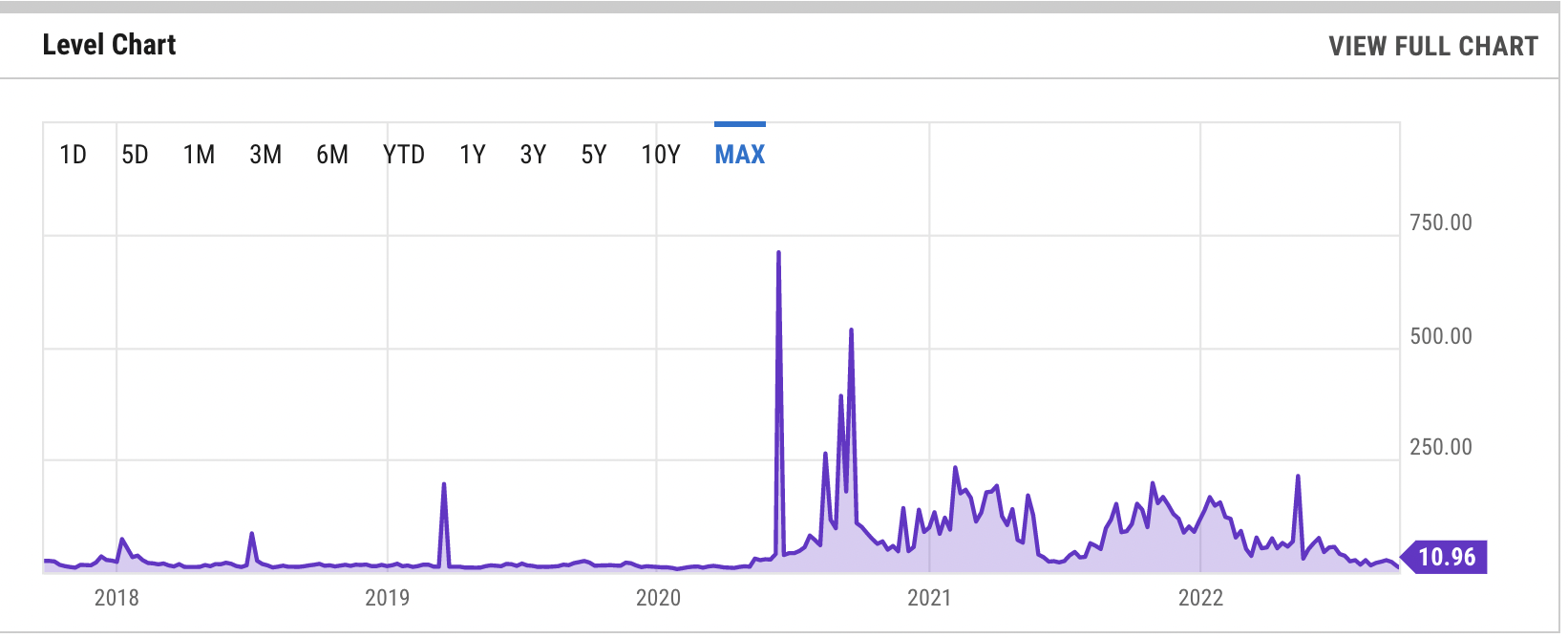
Source: blockchain.news
Ethereum network transaction prices (known as gas fees) have dropped significantly since 2021, according to The Block.

The report stated that the Ethereum network was at its peak during the summer of DeFi and the boom in non-fungible token (NFT) issuance in 2021.
Gas rates on the blockchain platform fell to the lowest point in recent years, as of September 22, data from The Block showed.
The average Ethereum gas price for September 25 was 10.96 Gwei, according to Ycharts.com, with the highest being 474.57 Gwei on May 1, 2022. down from 50.96 a year ago. This is a change of 20.73% from yesterday and -78.50% from a year ago.
The historical maximum (ATH) of the average gas tariffs even reached 709.71 Gwei, as of June 11, 2020, which was much higher than the current level.

Source: Ycharts.com
Despite the drop in gas fees, Ethereum’s transaction count and daily active users have not decreased at the same time. According to The Block, the possible culprit could be that transacting users do not see the need to pay high costs to complete their transactions quickly.
Block Research data analyst Simon Cousaert explained that “people are not in a hurry and are not willing to pay more to get their transactions done sooner.”
The report also added that the statistics do not indicate that they are close to historical lows, as shown by the total transaction count and active addresses on the Ethereum network. The opposite is the actual case; both are up roughly 20% and 60% in the same two-year period, respectively.
uniswapOpenSea and ETH transfers were the smart contracts that consumed the most gas in the last month, according to data from The Block.
The OpenSea NFT market has been a huge contributor to a large share of total gas consumption over the entire 14-month period, but has declined significantly since January.
The Block added that this caused other transactions on the network, such as transfers and token swaps, to cost an astronomical amount more.
There has been significant growth in the Layer 2 space. The report added that the main growth was seen in optimistic summary solutions such as Arbitrum and Optimism.
Transaction counts in leading summary optimistic solutions are on an upward trajectory, even though transaction costs are hitting new lows.
In another development, the latest Ethereum upgrade (the merger) is reducing the supply of Ether (ETH) in the proof-of-stake (PoS) consensus, data from Ethereum tracker Ultrasound Money has shown.
However, the second largest cryptocurrency may still have a long way to go before turning deflationary.
Some of the key promises that the update promised to make for the Ethereum blockchain were to improve efficiency and make the network more scalable, reduce the supply of Ether, thus making it a deflationary asset, and others.
Metrics from the Ultrasound Money web portal show that the supply of Ether under the Proof-of-Stake network has increased by more than 5,990 since the Merge event so far. But this number is lower than it might have been under the proof-of-work consensus mechanism, the data shows.
In addition to that, the number is much lower than the supply of Bitcoin, whose network produces 6.25 BTC coins every ten minutes with the proof-of-work mechanism.
According to the Ultrasound Money platform, Ether can become deflationary when the coins in the block subsidy are lower than those being burned. Furthermore, ETH will become a deflationary asset when the number of people transacting the currency grows more than those who stake it.
Image Source: Shutterstock
Read More at blockchain.news